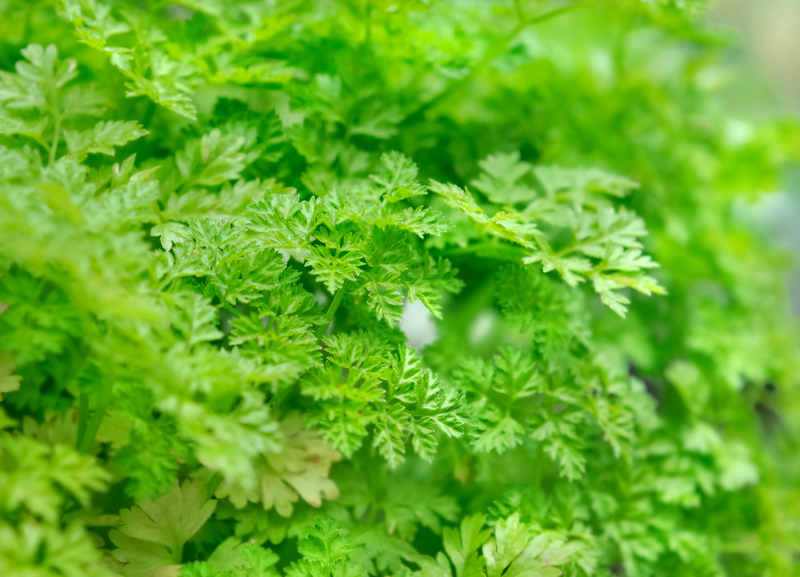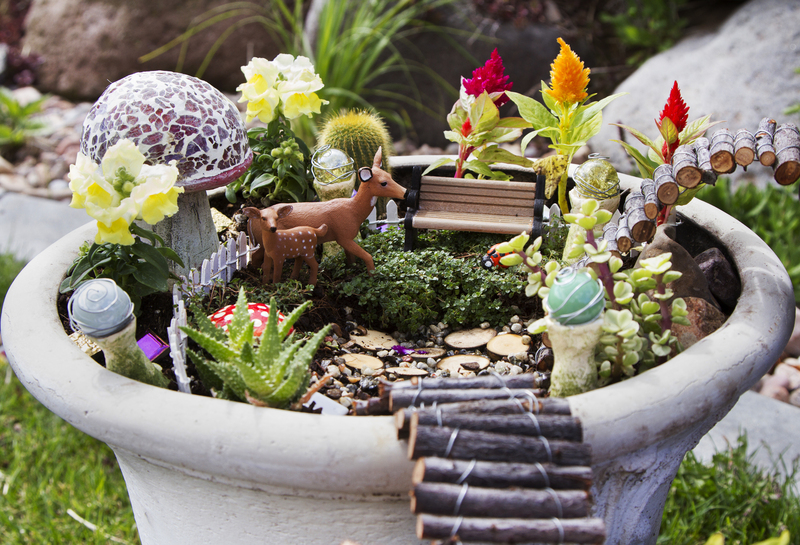The Ultimate Guide to Creating a Transportable Garden
Are you someone who loves plants but moves often or has limited space? A transportable garden may be exactly what you need. Whether you're an urban dweller, frequent traveler, or simply looking for gardening flexibility, portable gardens are trendy, versatile, and rewarding. This comprehensive guide explores everything you need to know about crafting your own movable garden--from design and plant selection to maintenance and transport tips. Start cultivating your green paradise, no matter where life takes you!

Table of Contents
- Why Create a Transportable Garden?
- How to Plan Your Portable Garden
- Choosing the Best Containers
- Selecting Plants for Mobility
- Soil and Drainage Tips
- Assembling and Designing Your Movable Garden
- Watering and Fertilizing on the Move
- Transporting Your Mobile Garden
- Seasonal Care and Maintenance
- Creative Ideas for Movable Gardens
- Frequently Asked Questions
Why Create a Transportable Garden?
If you've ever had to leave cherished plants behind during a move or wished for a flexible green space, portable gardens offer the ultimate solution. Here's why:
- Flexibility: Move your plants indoors or outdoors as seasons and preferences change.
- Makes moving easy: Take your beloved greenery with you whenever you relocate.
- Space-saving: Perfect for balconies, patios, renters, and urban dwellers.
- Customization: Rearrange your garden to suit your mood or redesign your environment instantly.
How to Plan Your Portable Garden
Success starts with a solid plan. Think about your needs, location, and the amount of light your garden will receive. A good plan prevents headaches and wasted materials later on. Consider:
- Garden Size: How many containers do you want? Where will they be placed?
- Purpose: Are you growing edibles, flowers, or ornamental foliage?
- Mobility: Will your garden need to shift frequently or remain stationary most of the time?
- Transport Method: Moving by car, hand truck, or public transport?
Tip: Draw a quick sketch of your desired layout. Knowing what you want ahead of time saves money and effort!
Choosing the Best Containers for Movable Gardens
Choosing the right containers is crucial for a successful transportable garden. Lightweight, durable, and easy-to-carry containers make all the difference. Options include:
- Fabric Grow Bags: Excellent for aeration, lightweight, and collapse for storage.
- Plastic Pots: Affordable, lightweight, and available in various sizes and shapes.
- Wheeled Planters: Built-in wheels for larger plants or heavier loads.
- Wooden Crates: Stylish and eco-friendly, but can be heavier when wet.
- Hanging Baskets: Ideal for small spaces and extremely portable.
_Underline durability_: Invest in high-quality, UV-resistant containers for long-term use and repeated moves.
Selecting Plants for Mobility
Not all plants are suited for a movable garden. Look for varieties that adapt well to change and don't grow too large or deep. Here's what works best:
- Herbs: Basil, mint, thyme, and parsley flourish in small containers.
- Compact Vegetables: Cherry tomatoes, salad greens, radishes, and baby carrots are ideal.
- Succulents and Cacti: Low maintenance and perfect for frequent movers.
- Dwarf Fruit Plants: Dwarf lemon, fig, and kumquat trees are container-friendly.
- Ornamental Grasses: Add texture without fuss.
- Trailing Vines: Ivy, pothos, and philodendrons adapt well to different environments.
Consider the growth habits and light requirements of your chosen plants. _Some thrive in indirect light, while others need full sun._ A mix of both ensures year-round beauty.
Soil and Drainage Considerations
The foundation of any healthy portable garden is the right soil blend. Good drainage is especially vital in containers, as excess moisture can lead to root rot.
- Use Quality Potting Mix: Choose light, soilless mixes designed for containers, rather than garden soil.
- Add Perlite or Vermiculite: These improve aeration and water retention.
- Layer the Bottom: A thin layer of pebbles or broken pottery helps excess water escape.
- Check Drainage Holes: All containers must have adequate drainage to avoid water-logged roots.
_Regularly inspect your transportable planters for blocked holes and signs of standing water._
Assembling and Designing Your Movable Garden
Now the fun part--putting your portable garden together! Blend practicality with creativity:
- Cluster Containers: Grouping pots creates a lush look and makes watering easier.
- Go Vertical: Use shelves, plant stands, or wall-mounted pots for vertical gardening.
- Elevate Larger Containers: Use wheeled stands or plant caddies to foster air circulation and mobility.
- Mix Textures and Heights: Combine trailing, upright, and mound-shaped plants for visual interest.
- Label Your Plants: Especially useful for edible gardens and easy relocation or gifting.
Don't forget: Place heavier or larger containers at the bottom if stacking or layering, ensuring stability during movement.
Watering and Fertilizing on the Move
Portable gardens may dry out faster than in-ground gardens. Consistent watering and the right nutrients will help plants thrive, especially when relocating.
- Use Mulch: Organic mulch helps retain moisture and keeps soil cool.
- Self-Watering Systems: Try wicking pots, globes, or capillary mats for more independence.
- Liquid Fertilizers: Quick-release nutrients are best for frequent movers.
- Watering Schedule: Establish a regular routine and adjust based on season and plant needs.
- Monitor Weight: Wet soil is heavier--keep this in mind if you plan to move your containers soon after watering.
Transporting Your Mobile Garden
Moving your transportable garden can be a breeze with some preparation:
- Minimize Weight: Water plants a day before the move for hydrated, but not waterlogged, soil.
- Secure Plants: Use cardboard dividers, bubble wrap, or towels to prevent tipping and breakage.
- Use Trolleys and Dollies: For larger planters, these tools save back strain and speed up the process.
- Protect Fragile Plants: Cover delicate foliage with breathable materials to prevent sunburn or frostbite.
- Choose the Right Vehicle: A vehicle with a flatbed or cargo space works best for larger mobile gardens.
- Keep an Emergency Kit: Include extra soil, ties, and first aid for any accidental damage in transit.
_Tip: For long-distance moves, research agricultural regulations on moving plants between regions or countries._
Seasonal Care and Maintenance
Keeping your mobile garden robust year-round requires seasonal attention:
- Spring/Summer: Increase feeding, check root health, and watch for pests as growth surges.
- Autumn: Prune as needed, begin acclimating sensitive plants indoors, and cut back on watering.
- Winter: Move frost-intolerant containers indoors or insulate with straw, bubble wrap, or cloches.
- Year-Round: Regularly inspect containers for cracks and replace any failing drainage systems.
Consistency is crucial: Transportable gardens thrive with attentive care, regardless of the season or location.
Creative Ideas for Movable Gardens
Take your groovy garden to the next level with these inventive concepts:
- Rolling Herb Carts: Keep culinary herbs at your fingertips for fresh meals anywhere.
- Hanging Pocket Gardens: Install vertical wall pouches on balconies or fences for maximum greenery in narrow spaces.
- Repurposed Luggage Planters: Give old suitcases or trunks new life as fun, functional containers!
- Miniature Fairy Gardens: Portable, whimsical arrangements that charm kids and adults alike.
- Theme Gardens: Create easy-to-move, themed garden boxes--pollinator pots, salad bowls, or succulent trays.
- Mobile Edible Walls: Frame vegetables or greens in a vertical structure with wheels for sun-chasing flexibility.
_Your imagination is the only limit. Movable gardens offer endless customization for any lifestyle._
Frequently Asked Questions
What are the best plants for a transportable garden?
Best choices include herbs, dwarf vegetables, succulents, cacti, small fruit trees, trailing vines, and ornamental grasses. Prioritize plants with shallow roots and moderate to slow growth rates.
How do I keep my portable plants healthy while moving?
_Acclimate your plants to new locations gradually by exposing them to new conditions incrementally. Hydrate adequately, protect roots, and avoid sharp temperature spikes during and after transit._
Can I create a portable garden indoors?
Absolutely! Use indoor-friendly containers and plants adapted to lower light, such as pothos, ferns, and peace lilies. Ensure good ventilation and place containers where they receive adequate sunlight.
Is a transportable garden expensive to set up?
It can be budget-friendly if you use repurposed containers, propagate plants from cuttings, and start with seeds. Upcycle items like buckets, baskets, and crates for affordable, personalized planters.
How often should I fertilize my movable garden?
Most container plants need more frequent feeding than those in-ground. Use a diluted, balanced liquid fertilizer every 2-4 weeks during the growing season.

Your Thriving, Portable Garden Awaits
Creating your own transportable garden is more than just a convenient way to enjoy plants--it's a dynamic, personalized approach to green living. With the right containers, adaptable plants, good soil, and creative design, your garden can travel with you through all of life's adventures. Experience the pleasure, practicality, and sustainability of gardening without boundaries--wherever you call home.
Now is the perfect time to start your journey with a movable garden. Embrace the ultimate in gardening freedom today!